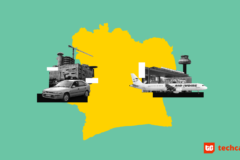The recent popularity of generative AI programmes has become a hot topic in conversations about society and technology. Allowing users to harness the power of cutting-edge technology in dreaming up remarkable creations, some see these applications as the next step in the history of technology while others see it as a danger to humanity. In the coming years, AI technology will likely remain at the centre of topics such as employment, copyright, finance, law, human creativity, and democracy.
Al has another dimension beyond tackling transactional efficiencies: integrating AI-based applications with digital public goods. AI’s power for democratisation and inclusion has not been fully harnessed so far. If used properly, AI solutions could create a fairer world in which everyone can produce art, find legal advice, write software, and access information to an extent never before possible. Moreover, the ease with which AI applications can be used and their cloud-based nature could be essential in narrowing the digital divide.
Consider financial inclusion, a perennial hot topic in discussions on banking across the Global South, where most inhabitants are unbanked: AI could prove a great disruptor. The cost of rolling out financial programmes is often too much for public sector institutions to bear. Still, the application of AI integrated with public digital ID and trusted data systems can provide sound financial advice to the low-income segments of society at minimal cost and bring millions into the economic mainstream.
To broaden this, embracing a digital economy has become a prerequisite for leapfrogging legacy issues and moving into the next economic and social development phase. But for that to happen, the playing field of digital public goods must be expanded.
Foundational rails
Defined by the UN Secretary-General António Guterres’ Roadmap for Digital Cooperation as “open source software, open data, open AI models, open standards and open content that adhere to privacy and other applicable laws and best practices, do no harm, and help attain the Sustainable Development Goals SDGs”, digital public goods are an integral part of the open architecture of the internet.
I like to describe digital public infrastructure as a set of rails on which you can run all sorts of trains—slow, fast, and bullet trains. The rails form the standard foundation on which the industry can design applications for various sectors, all with their own rules and regulations. Once this system is in place, you can’t deny anybody access to digital services because it is a public good.
To participate in the financial digital public good, you only need access to the internet, a digital identity, a mobile phone number and a bank account. We need to identify the parties involved and ensure that the data is verifiable and that both parties consent to that data being exchanged. Once this is established, financial transactions can take place, and you can then move money and data at low cost with enormous benefits in efficiency and output.
Putting a digital public infrastructure in place is worth the cost. In one of the world’s most successful projects in this regard, India has managed to build the infrastructure for 1.5 billion people at the cost of a dollar per person. Aadhaar is the world’s largest biometric ID system and was described by World Bank chief economist, Paul Romer, as “the most sophisticated ID programme in the world”. The benefits are already apparent. India’s finance minister, Nirmala Sitharaman, said that for the billion-plus dollars they had spent, they had already realised US$27 billion of benefit.
The time is ripe for a digital economy
This conversation might already be old hat in Africa, where mobile money is widespread, with Kenya’s Safaricom rolling out several telco-based products, such as the ubiquitous M-PESA, which several countries have adopted. It is an excellent system but they do not have a regulatory framework as robust as in financial services, such as banking.
Nevertheless, given the public’s familiarity with digital transactions and their trust in it, as well as the advantages brought about by the African Continental Free Trade Area, African financial regulators can come together to align their thinking towards the creation of interlinked digital public infrastructure. Doing so would ensure that it is accessible, affordable and inclusive for all users to reap the benefits of increased digitalisation. Globally, Singapore has demonstrated the approach and has been working to establish multi-jurisdiction-linked digital services by linking its payment service PayNow with the faster payment systems of other countries, such as PromptPay in Thailand and UPI in India. Further, the Bank for International Settlements (BIS) is collaborating with several central banks on Project Nexus to establish a framework to develop multi-jurisdiction payment connectivity, and five countries in ASEAN, including Singapore, are part of this effort.
Regardless of today’s popular diverse opinions regarding the future of AI, there is no doubt that AI is a massive boost to the speed, efficiency, accuracy, and security of day-to-day transactions. This is especially evident when AI takes advantage of the foundational new generation of well-structured and digital public good software deployed by countries such as Singapore and India. The software is also helping nations develop and diversify their economies more rapidly and raise growth while creating millions of jobs. What remains clear is that digital public goods will shape the evolution of finance across the coming decades, and we shall all be the better for it.
—Sopnendu Mohanty, is the chief fintech officer, Monetary Authority of Singapore, and chairman of the board, Elevandi.





















